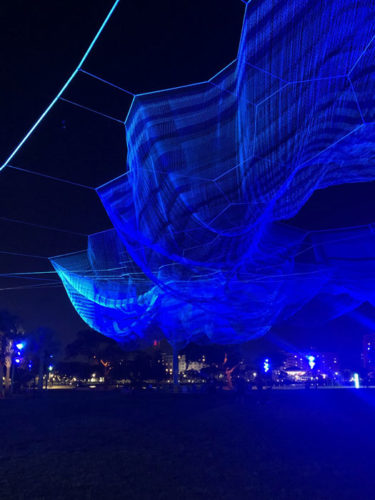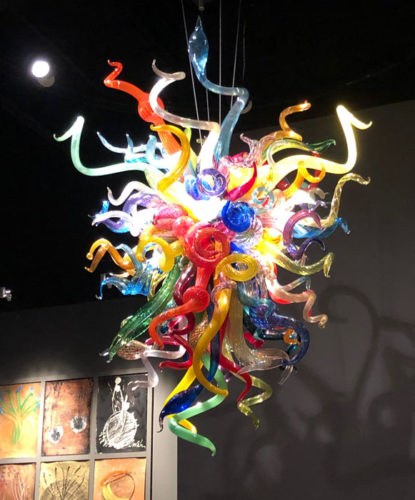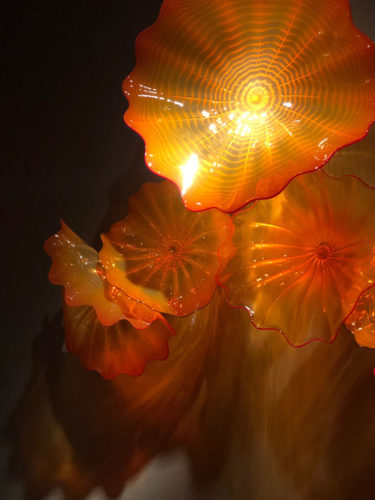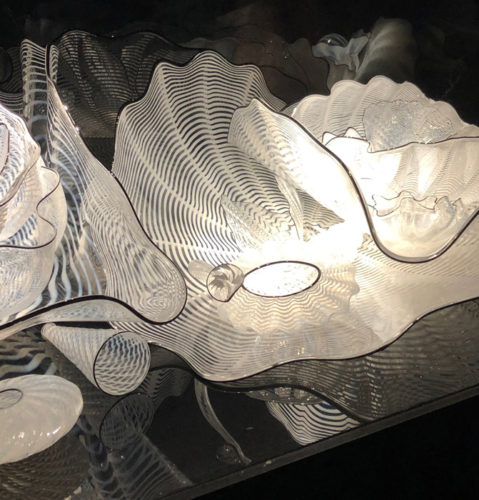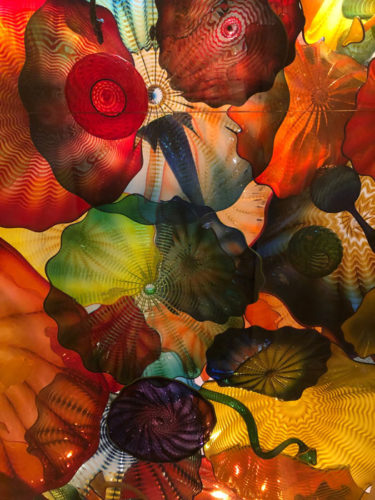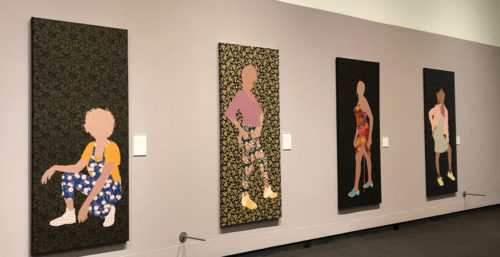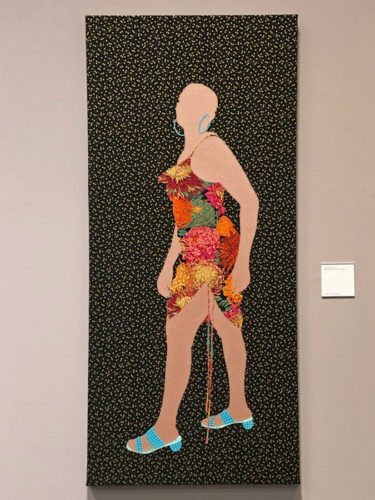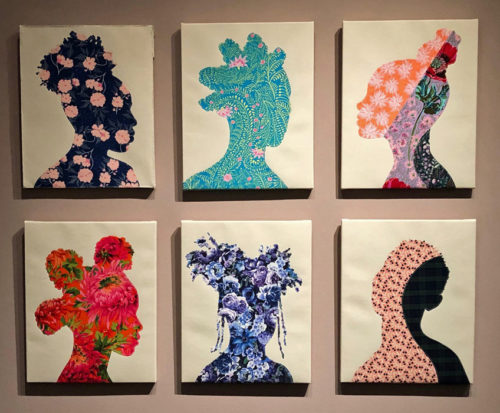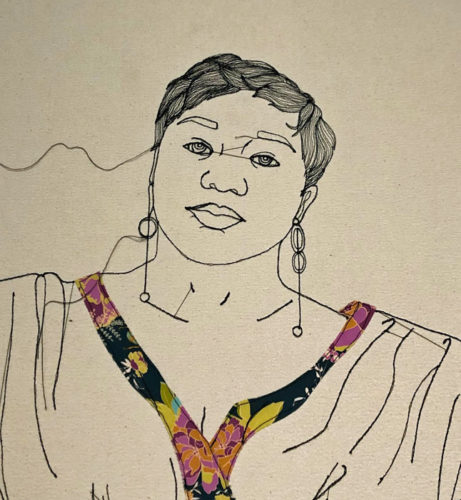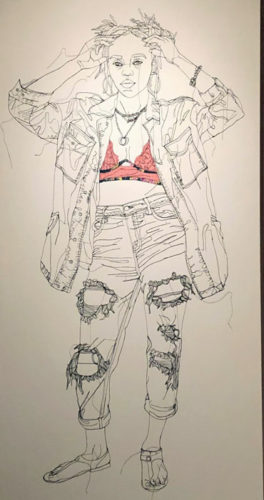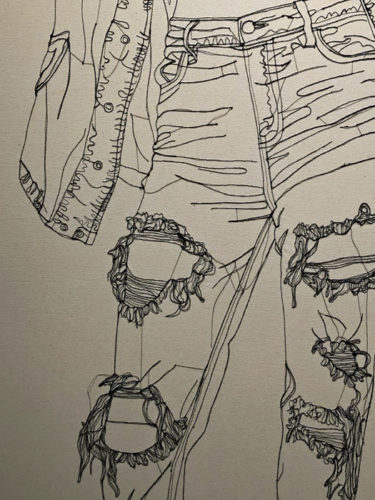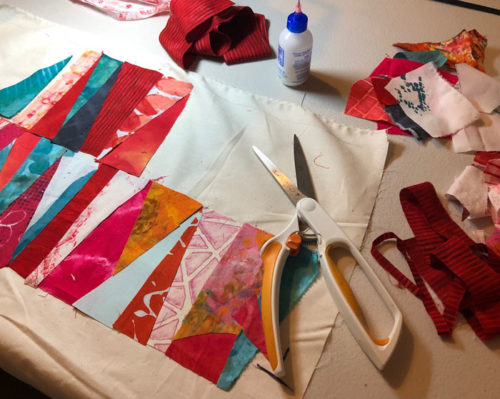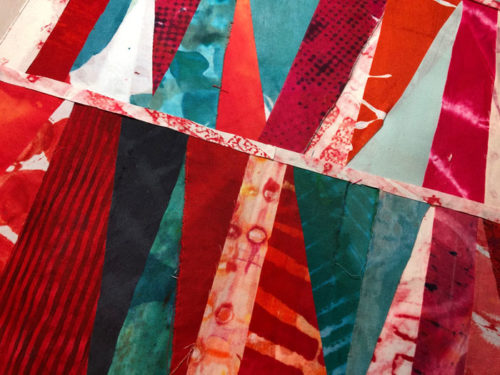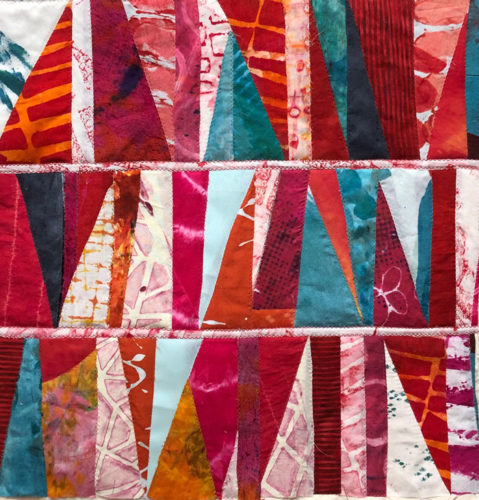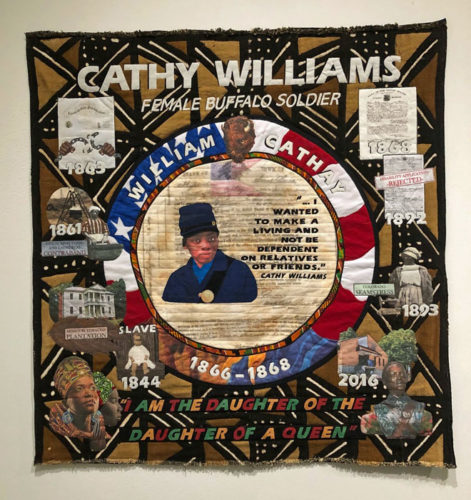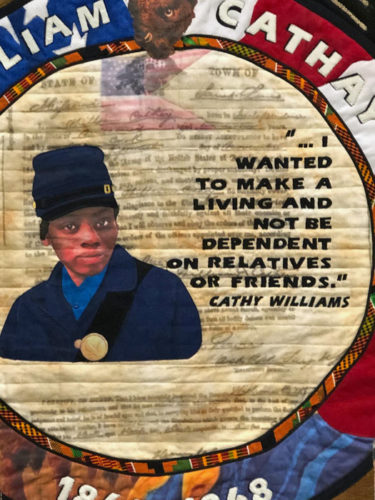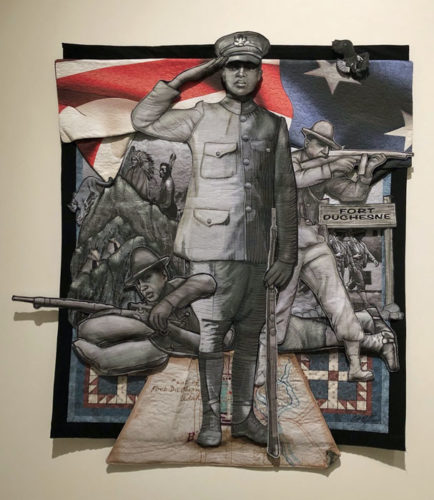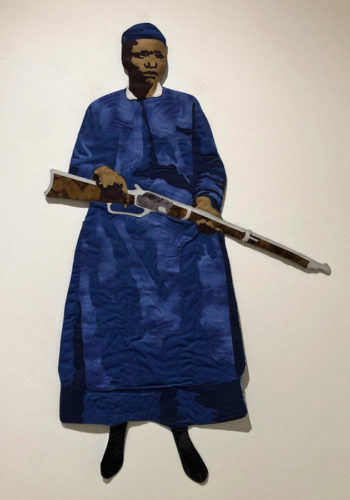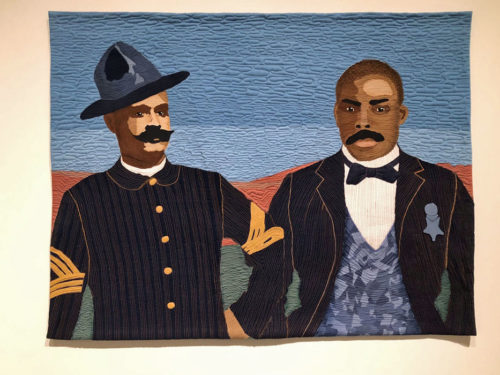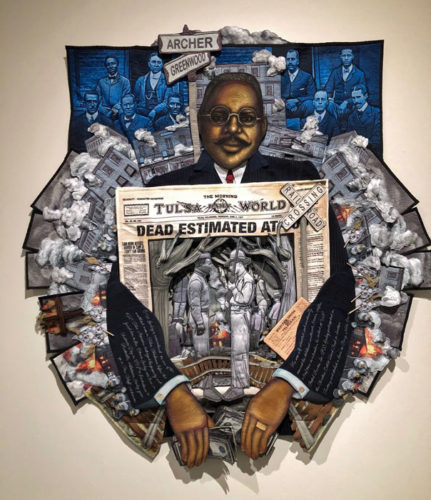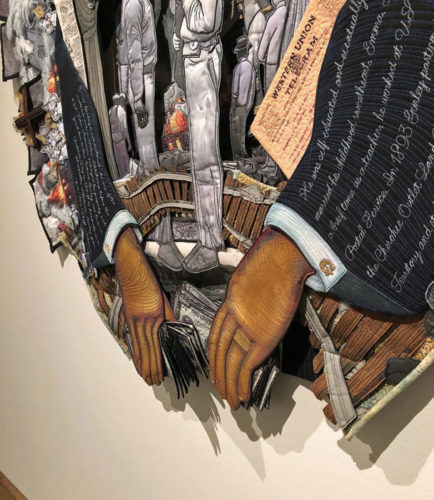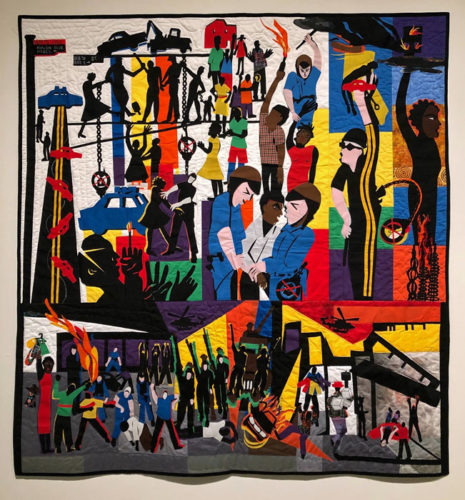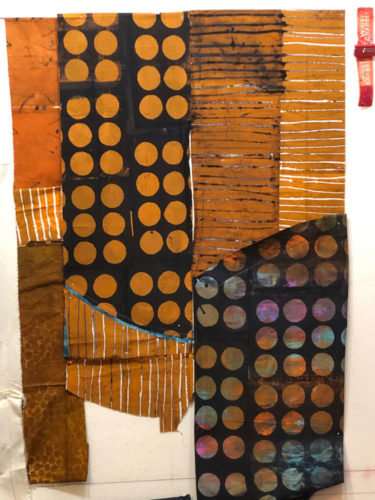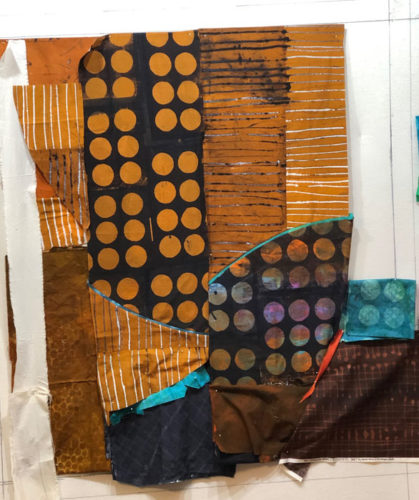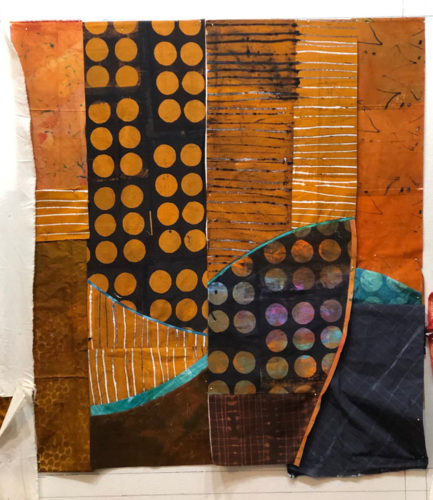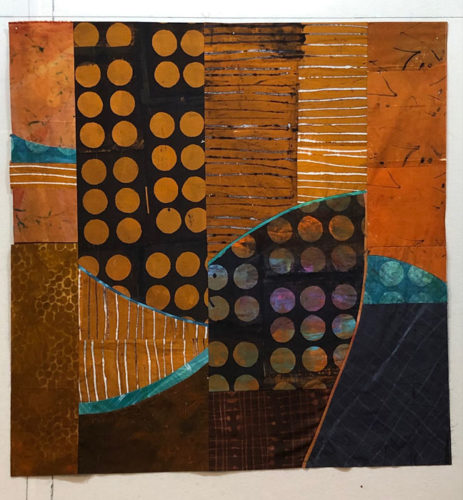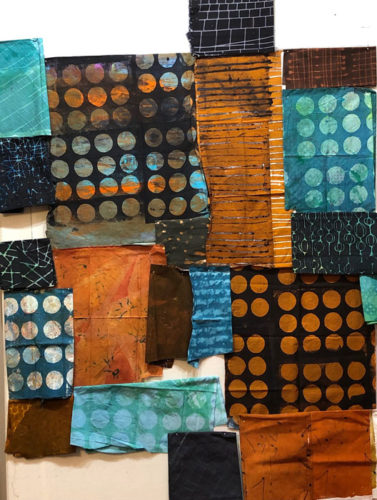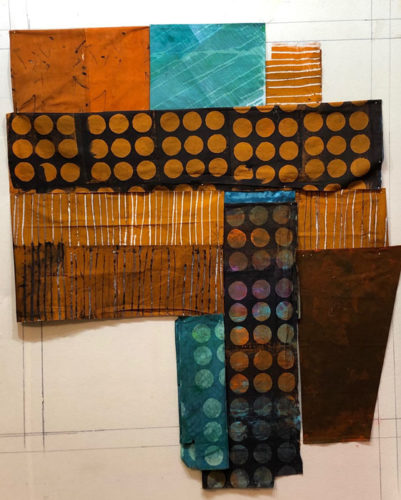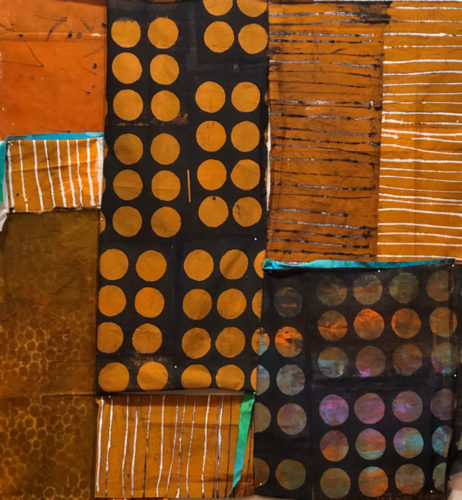I enjoyed my last quilt so much that I decided to use the scraps from that one to start the next. With a little editing, I selected these fabrics as my starting point.
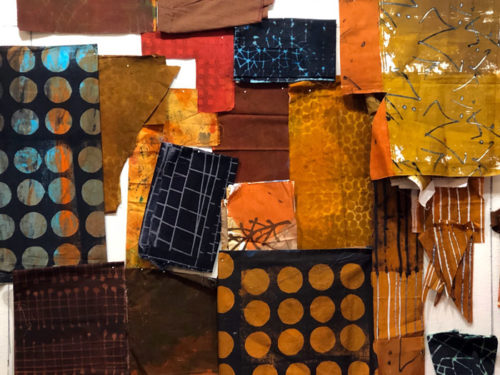
Of course, I didn’t want this new quilt to look like the previous one, so I sorta shied away from the large circles, much as I loved them. I had a twiggy fabric I thought might be interesting enough to be the focus point.
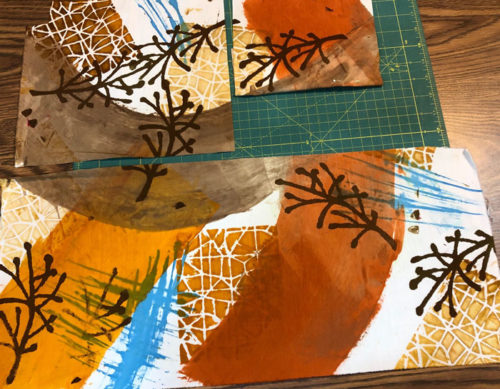
I didn’t like the dull gray brown parts, though, so I carefully cut the bulk of them away. The newly cut pieces are shown below. I really liked them and thought the high value contrast would be eye catching.

So, I started to arrange things on the design wall. I clustered the twiggy parts together and planned to insert very narrow, dark lines between them. I thought this would play up the dark line contrast of the twigs. So far, so good.
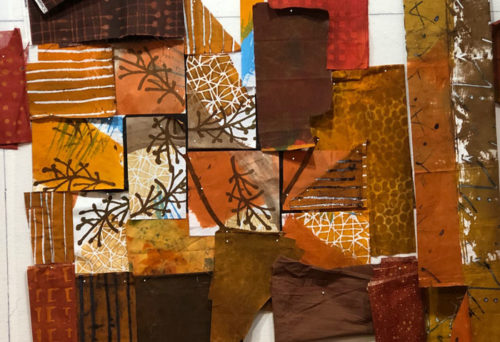
Hmm, I’m not sure I properly considered the scale of the twiggy parts. Could they carry all these other fabrics in a piece this size? Were they beginning to look skimpy? I could see that I needed something besides just squares of fabric for the perimeter pieces. What about curving skinny pieces? Could they play up the twigs idea? I auditioned the idea, below, and liked it.
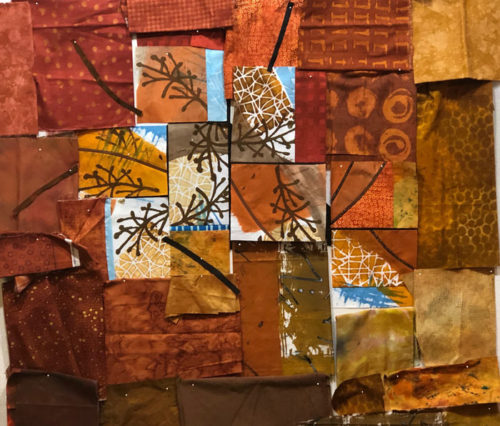
Yes, the curvy lines helped. And I added some little bits of blue. Also, because the twigs were looking a little lost, I reduced the size of the whole thing.
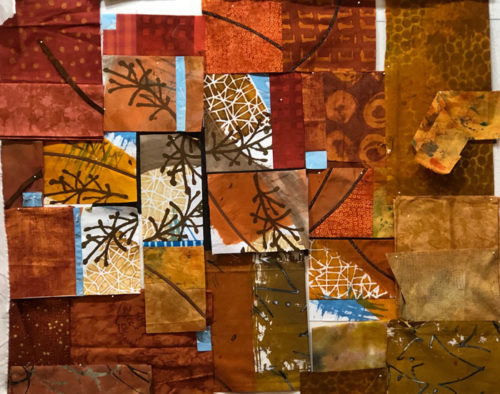
I was getting close to piecing.
Or so I thought.
And then I watched a video.
Ellen Lindner

